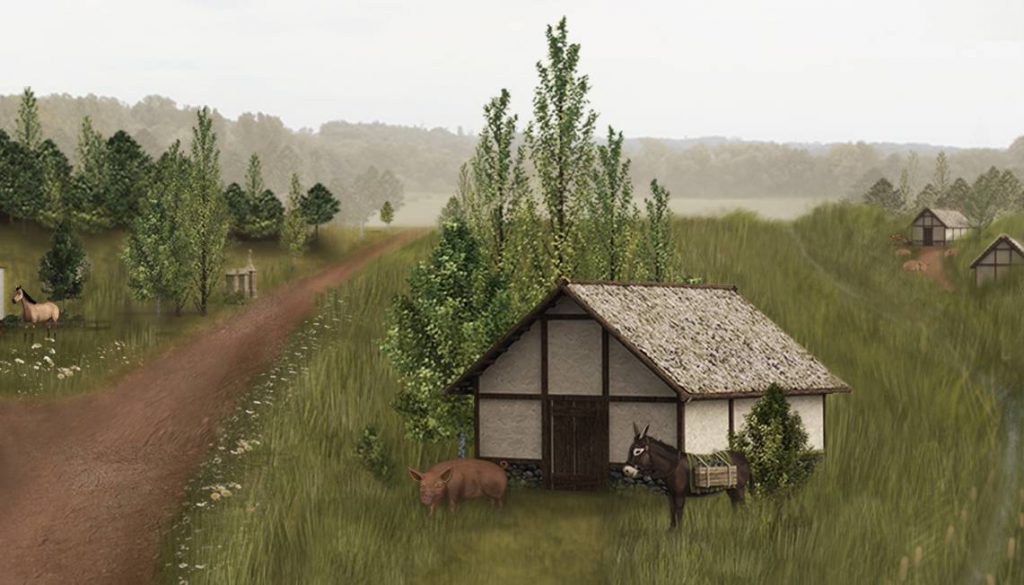Roman timber framing
Baneheide, Bocholtz
Baneheide is a typical example of a Limburg village: 30 houses, 80 inhabitants, a water pond and a well, farms and, at the crossroads in the village, a wooden cross. The name Baneheide may be derived from the Roman heerbaan, a road intended for the army. When the Romans conquered new territory, they immediately built a road network for the army.
A road itself has not been found in Baneheide. However, traces have been discovered of Roman habitation, a small farming village. The Romans in Baneheide did not live in luxurious villas, but in traditional farms made of wood, straw and clay. They resembled the half-timbered farmhouses of South Limburg, examples of which can also be seen in Baneheide.
In Roman times, the farms usually had only one storey and a thatched roof. The principle of the wooden frame, filled with a wickerwork of branches smeared with clay, was already known. The inhabitants of the region gradually adapted their houses to the Roman style. With each renovation they added something Roman to their traditional farms. They replaced a clay wall with a stone wall, the thatched roof with a tiled roof. That mix of old and new building materials can still be seen. Just look at half-timbered houses where the timber frame is filled with bricks.
